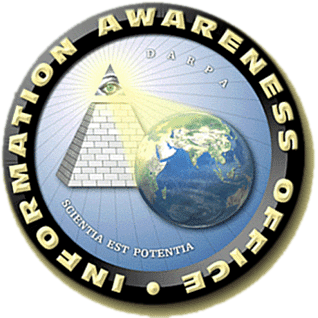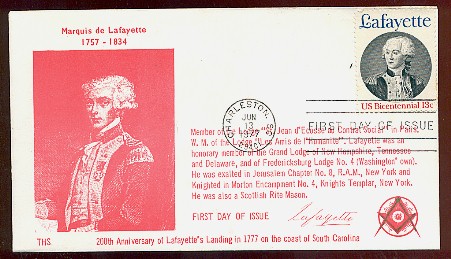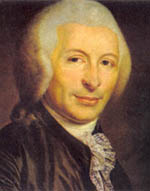Freemasonry and the American & French Revolutions:



Brother Napoleon Bonaparte
Hegemonic Dictator and Destroyer of Europe
Napoleon Bonaparte (1769-1821) was initiated into Army Philadelphe Lodge in 1798. His brothers, Joseph, Lucian, Louis and Jerome, were also Freemasons. Five of the six members of Napoleon's Grand Councel of the Empire were Freemasons, as were six of the nine Imperial Officers and 22 of the 30 Marshals of France.


Joseph Guillotine
Inventor, Freemason, Revolutionary
Founding member, Grand Orient of France
Founding member Lodge of the Nine Sisters (Benjamin Franklins Paris Lodge)

Freemasonry: "The Cornerstone of Freedom"
Both the Convention and the Committee saw themselves as building a new destiny for humanity. They believed that they were going to replace the old, property-based, monarchy and aristocracy with a new, equality-based republic of civic virtue. France would, under their guidance, become the Republic of Virtue, and it would rebuild society from the ground up in order to build this republic. For the old system was founded on a bad social contract and bad foundations, such as property, Christianity, and social distinction.
The first move, then, was to eliminate Christianity. They first began by throwing the old Christian calendar, which, though based on the Roman calendar, set its dates from the (supposed) death of Christ. In October, 1793, shortly after seizing control of France, the Convention threw out the old calendar and replaced it with a Revolutionary calendar. On this new calendar, the first day of the calendar was the first day of the Revolution. Each month consisted of thirty days, and the old Roman names were replaced by names describing the season (since July is hot, for instance, it became "Thermidor"). In order to fully dechrisianize the calendar, they threw out the old sabbath system and made every tenth day a holiday rather than every seventh. (Part of the reason for going into such detail over this silliness is that all the major events of the Revolution to follow are traditionally dated using the Revolutionary calendar—historians are not quite so open-minded, however, about Islamic dates which, in the Islamic world, are dated not on a Christian calendar but on an Islamic calendar).
The Christian religion had to go completely. In November of 1793, the Convention founded a Religion of Reason and renamed Notre Dame cathedral in Paris, the "Temple of Reason". While all this went over more or less smoothly in Paris, the results in the countryside were less than stellar. The Convention created a group of officials, called "mission deputies," to enforce the dechristianization of the French republic. Mostly this consisted of closing down churches, but it sometimes meant persecution and execution. Some priests were even forced to marry (and, what the historians don't tell you, women were forced to marry priests—the coercion functioned in both directions). Perhaps more than anything, the efforts to dechristianize France dramatically eroded support for the radical revolution throughout the countryside.
Eventually, Robespierre decided that the religion of Reason was a bit too difficult for the average person to grasp., so he changed the new French religion into the "Cult of the Supreme Being."
On July 27, Robespierre was arrested as an enemy of the Republic and, like Danton before him, died at the hands of his own bloody machinery of justice along with twenty-one other radical leaders of the Convention. The Terror came to an end. While historians point to the dechristianization of France and the sheer bloodiness of the Terror as motives for a counter-reaction, in reality the Terror came to an end because it succeeded so well. The tribunals had managed to execute so many people—probably forty thousand people—so efficiently that all the uprisings, both radical and monarchist, had been effectively snuffed out by the summer of 1794.

What matter the means as long as one arrives at the end?
Honre-Gabriel Riquetti, Comte de Mirabeau
'The Great Terror' Revolutionary and Freemason
Paris, 1789
Freemasonry: The Cornerstone of Freedom By MWBro Norman R. Thomas, Grand Master, Grand Lodge of Alberta The Alberta Freemason, May 2004 Issue Official Magazine of the Grand Lodge of Alberta, Canada This slogan, chosen by the organizers of the 2004 Conference of Grand Masters of North America, held February 14th to 17th in Washington, DC, should leave no doubt in anyone’s mind that the thrust of the Conference was to remind the world at large that the American Revolution was led by Freemasons, and that while the New Order has achieved undoubted success, it is intended that the move for change be now directed inwards, towards the Fraternity itself. The Alberta Grand Master’s Masonic Tour of the British Isles (17 September to 1 October 2003) introduced the Alberta Mason to the cradle of Freemasonry with all its hopes, aspirations and beliefs in the value of the democratic process. For those who doubt this, read The Invisible College by Robert Lomas that gives an account of the contributions of God-fearing Freemasons to the birth of Modern Science and the Royal Society. With the support of the restored Charles II, twelve men, including Sir Christopher Wren and Sir Robert Moray, imbued with the Masonic ideal for a brave new world, demonstrated that reason, intellect and research could resolve the problems facing mankind, wherein armies and despots had previously failed. As a graduate student at the Medical College of Virginia and at the Walter Reed Hospital in Bethesda, Maryland, I had often taken my wife and children, all of us now members of the Masonic Order, to see the sights of Washington and especially to visit the Smithsonian, but never before this Conference had I realized the depth of the Masonic influence on the development of the city of Washington. On the afternoon of St. Valentine’s Day, the delegates and their wives were privileged to tour the District of Columbia under the auspices of Paul Bessell, Junior Grand Warden of the FAAM of DC. We learned that the monuments and buildings at the centre of the ten square mile region were laid along the four cardinal points of the compass, arranged around the centrally placed Washington Memorial. George Washington, regaled in his Masonic accoutrements, had laid the Cornerstone of the Capitol on September 18th, 1793. The Capitol itself became the focal point of the broad avenues which radiate out to form the compasses, crossed by a right-angled square. On the evening of that first day, the delegation royally dined at the Grand Lodge of DC’s gala at the Reagan Center, followed by a scintillating musical interlude of Masonic music, including excerpts from Mozart’s Magic Flute. The whole evening was magical and allowed opportunity to visit with Masons from all over the world. The Grand Masters’ Conference was opened on the following morning by MWBro Carl Fitje, GM of New York, who exhibited the gavel of George Washington before the GMs of sixty-four jurisdictions, including dignitaries from A&ASR and Royal Arch concordances, among whom was our own Sovereign Grand Commander of Canada, Orlan Weber. The Conference reconvened in the afternoon at the George Washington Masonic National Memorial at Alexandria, Virginia. In the newly decorated George Washington Memorial Museum, the Holy Bible on which Washington and several subsequent presidents were sworn into office was on loan from St. John’s Lodge in New York. The Grand Masters from Massachusetts and Alberta were privileged to stand together while photographs were taken. That’s one I will keep! Putting all things into perspective, a large stone cut from the quarry of King Solomon’s Temple, was placed in the south corner, as one entered the Temple. On the second and third days, twenty-five excellent break-out sessions were mounted, dealing with a wide range of Masonic topics of concern, including membership revival, making Masons on sight, mentoring, and One- Day Classes. One outstanding session even dealt with the statistics of the effect of rote learning versus education and research as a motivator of Masonic membership retention. Consistent with the theme of the Conference, the latter was entitled “A Quiet Revolution in Candidate Advancement Requirements: Memorization or Education and other Alternatives.” I recommend the Brethren to read this document which was well presented and debated and left no doubt that rote learning is a thing of the past for the more enlightened Mason who adopts a scientific approach to the new research. The statistical analysis is overwhelmingly in favour of non-rote education as a superior approach to candidate advancement. Revolution is the rule of the day and each of us owes it to our Order to be suitably informed, no matter what one’s prejudice may be. On the final day, Brother Dr. David B. Harte, DDS, explained the successful CHIP program, aimed at precise identification of missing, lost and murdered children. It consists of an every child canvas of recognition, based on dental impressions and bites. It has proved more useful than DNA assessment and fingerprinting that often loses its efficacy due to deterioration of the sample from chemical breakdown and sloughing of the skin, in contrast to the unchanging calcified tooth structures. It is expected that this programme will be inaugurated promptly in Alberta with the assistance of the Alberta Dental Association, so as to reduce delay in identification and recovery of missing children. |











No comments:
Post a Comment